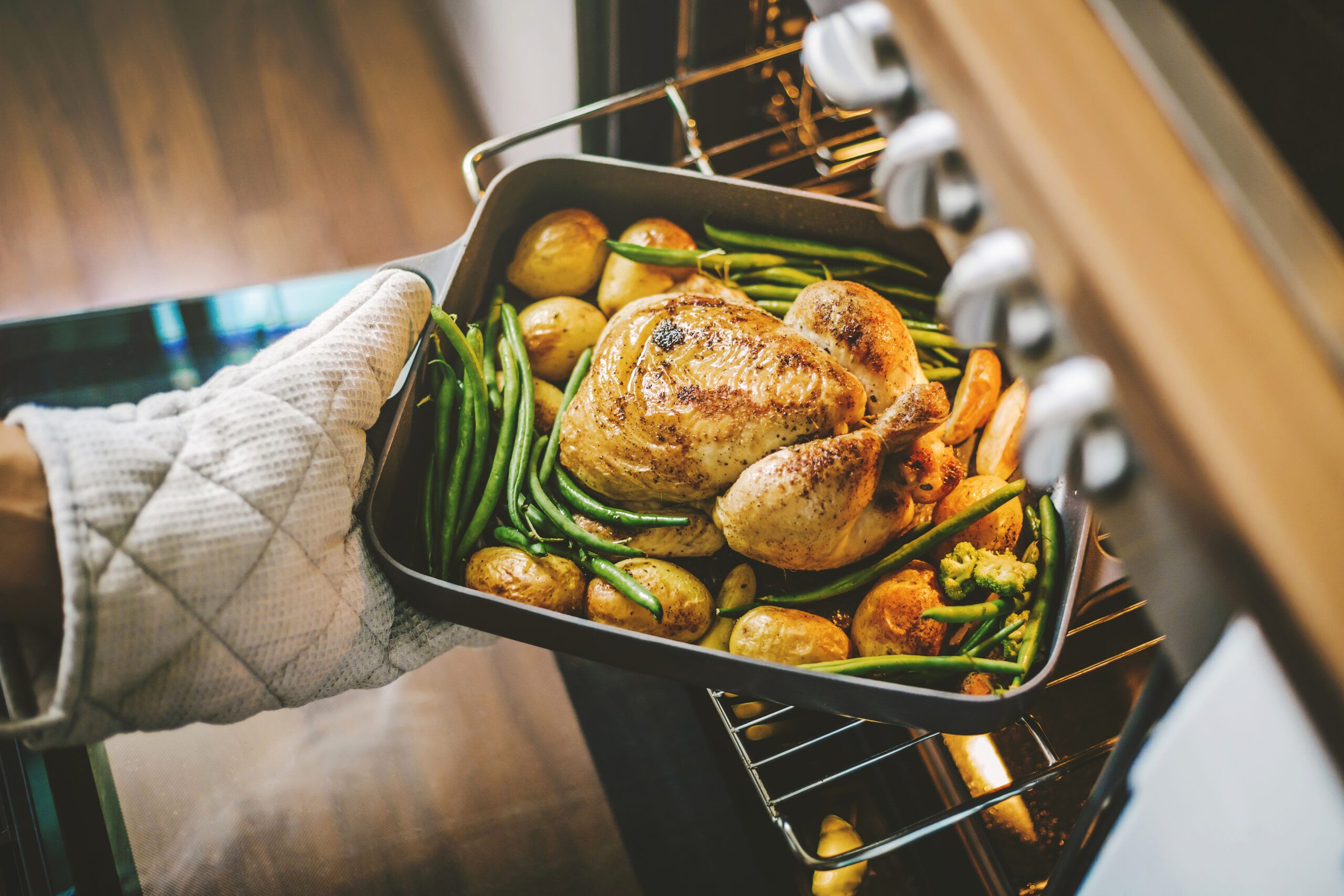We may be compensated if you purchase through links on our website. Our team is committed to delivering honest, objective, and independent reviews on home products and services.
The holiday season is a bustling time of year in most kitchens. The host is preparing the bird in the oven, or maybe frying something on the range. Guests file in, children play, and the stove goes unattended for minutes as the cook takes a call. Unfortunately, this familiar scenario is the perfect recipe for a dangerous kitchen fire.
Thanksgiving is the peak day of the year for kitchen fires, according to the National Fire Protection Association (NFPA). Almost three times more fires occur on Thanksgiving than on any other day.
“Most of these fires involve the kitchen stovetop,” says Lorraine Carli of the NFPA. “The majority of the cooking fires occur because of unattended cooking.” However, residential kitchen fire safety has come a long way since the days when smoke alarms and fire extinguishers were the only available firefighting tools.
Essential Safety Equipment
Every kitchen should have:
- Smoke alarm
- Class K fire extinguisher
- First aid kit
- Kitchen fire blanket
Check your smoke alarms and fire extinguisher before Thanksgiving to ensure they’re in good working order. A kitchen fire blanket is a less common item but is highly effective at smothering grease fires. The fabric is lightweight, reusable, and safer than a fire extinguisher. Smilco kitchen blankets run about $30.
If you’re willing to invest a little more money in fire prevention, consider these:
- The Guardian: This is a fire suppression system that’s magnetically held to the underside of the range hood. When a fire is detected, the system will discharge a potassium acetate-based chemical, while simultaneously shutting off the power to the stove. The Guardian III system comes complete with professional installation and costs about $2,000.
- Williams-Pyro Stovetop FireStop: This is a dry-chemical fire extinguisher in a can. The 12-ounce cans use magnets to attach to the underside of your hood and release their powder once a stovetop fire’s flames reach the FireStop. They cost about $85 for two.
Safe Cooking Practices for the Holidays
Paying attention and preventing accidents are the best ways to stay safe in the kitchen during the holidays.
Maintain a clutter-free cooking area. This reduces fire risks and prevents accidents like burns from knocking over hot pots or pans. Keep pot handles turned inward to avoid accidental spills, and use back burners when possible to keep hot items out of reach. Keep all cabinet doors and drawers closed to prevent injuries from bumping into them while moving around the kitchen.
Staying in the kitchen while cooking gives you a better chance of stopping potential fires from starting and of reacting quickly if they do. Avoid leaving the room to use the phone.
Know the Oil’s Limits
While some electric range burners can reach 1,400 degrees Fahrenheit, cooking oils can ignite when heated past 700 degrees Fahrenheit. Many kitchen fires start when the cooking oil catches fire in the pan.
The NFPA recommends turning the knob to cut off the heat source and putting a lid over the fire to smother it to combat these fires. “Take the cover for that pan out ahead of time,” says Carli. “In the event there is a fire, you’ll have it ready.”
Child and Pet Kitchen Safety During the Holidays
The excitement of Thanksgiving can make it challenging to keep children and pets safe in a busy kitchen. Establish clear rules and boundaries to protect your loved ones from potential dangers.
- Create a safe zone at least 3 feet away from the stove for children and pets.
- Consider using baby gates to keep toddlers out of the kitchen entirely.
- Assign older children specific tasks away from the stove, such as setting the table or preparing cold dishes, to keep them involved but safe.
- Educate children about the dangers of hot surfaces and sharp objects in the kitchen.
For pets, ensure they’re kept out of the kitchen to prevent tripping hazards and the temptation of counter-surfing. Consider the crate or a separate room during the most hectic cooking times. Use pet gates to install a barrier that’s easy to install and remove.
Emergency Response Planning for Your Home
Knowing how to respond in an emergency and having a well-practiced escape plan can save lives.
DIYers know when a project is better off left to the pros, and the same logic extends to fire suppression. Small kitchen fires can grow rapidly with flammable materials like cabinetry around.
In these cases, use a fire escape plan and call the fire department from outside. To map an escape plan, check out the NFPA’s Basic Fire Escape Planning site. The NFPA recommends trying to extinguish small, contained fires—anything beyond that should be left to the fire department.

